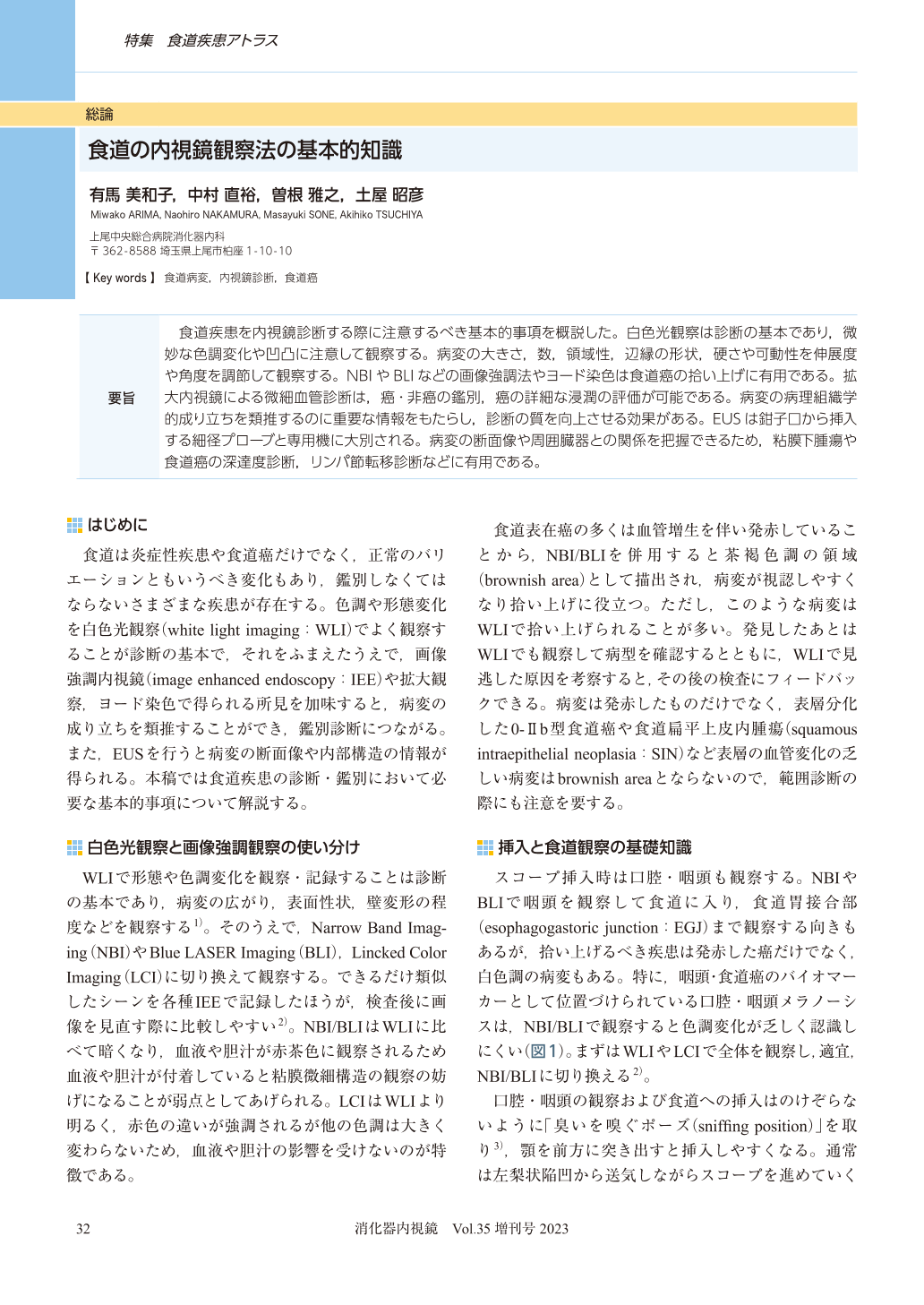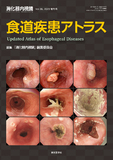Japanese
English
- 有料閲覧
- Abstract 文献概要
- 1ページ目 Look Inside
- 参考文献 Reference
- サイト内被引用 Cited by
要旨
食道疾患を内視鏡診断する際に注意するべき基本的事項を概説した。白色光観察は診断の基本であり,微妙な色調変化や凹凸に注意して観察する。病変の大きさ,数,領域性,辺縁の形状,硬さや可動性を伸展度や角度を調節して観察する。NBIやBLIなどの画像強調法やヨード染色は食道癌の拾い上げに有用である。拡大内視鏡による微細血管診断は,癌・非癌の鑑別,癌の詳細な浸潤の評価が可能である。病変の病理組織学的成り立ちを類推するのに重要な情報をもたらし,診断の質を向上させる効果がある。EUSは鉗子口から挿入する細径プローブと専用機に大別される。病変の断面像や周囲臓器との関係を把握できるため,粘膜下腫瘍や食道癌の深達度診断,リンパ節転移診断などに有用である。
We outline the basic precautions that should be taken during the endoscopic diagnosis of esophageal diseases. Observation with white light imaging is the basis of diagnosis, and attention should be paid to minute changes in color tone and irregularities. Lesion size, number, regionality, marginal shape, stiffness, and mobility should be evaluated by adjusting the degree of extension by air insufflation and observation angle. Image enhancement endoscopy techniques such as NBI and BLI and iodine staining are useful during screening for esophageal cancer. Microvascular diagnosis on magnifying endoscopy allows cancer to be differentiated from nonmalignant conditions and facilitates detailed assessment of cancer invasion. These techniques provide important information for inferring the histopathological origin of lesions, and have the effect of improving the quality of diagnosis. Systems of EUS can be broadly divided into two types: those that use a miniature probe inserted through the forceps channel, and conventional EUS in which an ultrasound probe is incorporated in the scope.
Because EUS can provide cross-sectional images of lesions and its relationship with the surrounding organs, it is useful for the diagnosis of the submucosal tumor and invasion depth of esophageal cancer, as well as diagnosis of lymph node metastasis.

© tokyo-igakusha.co.jp. All right reserved.


